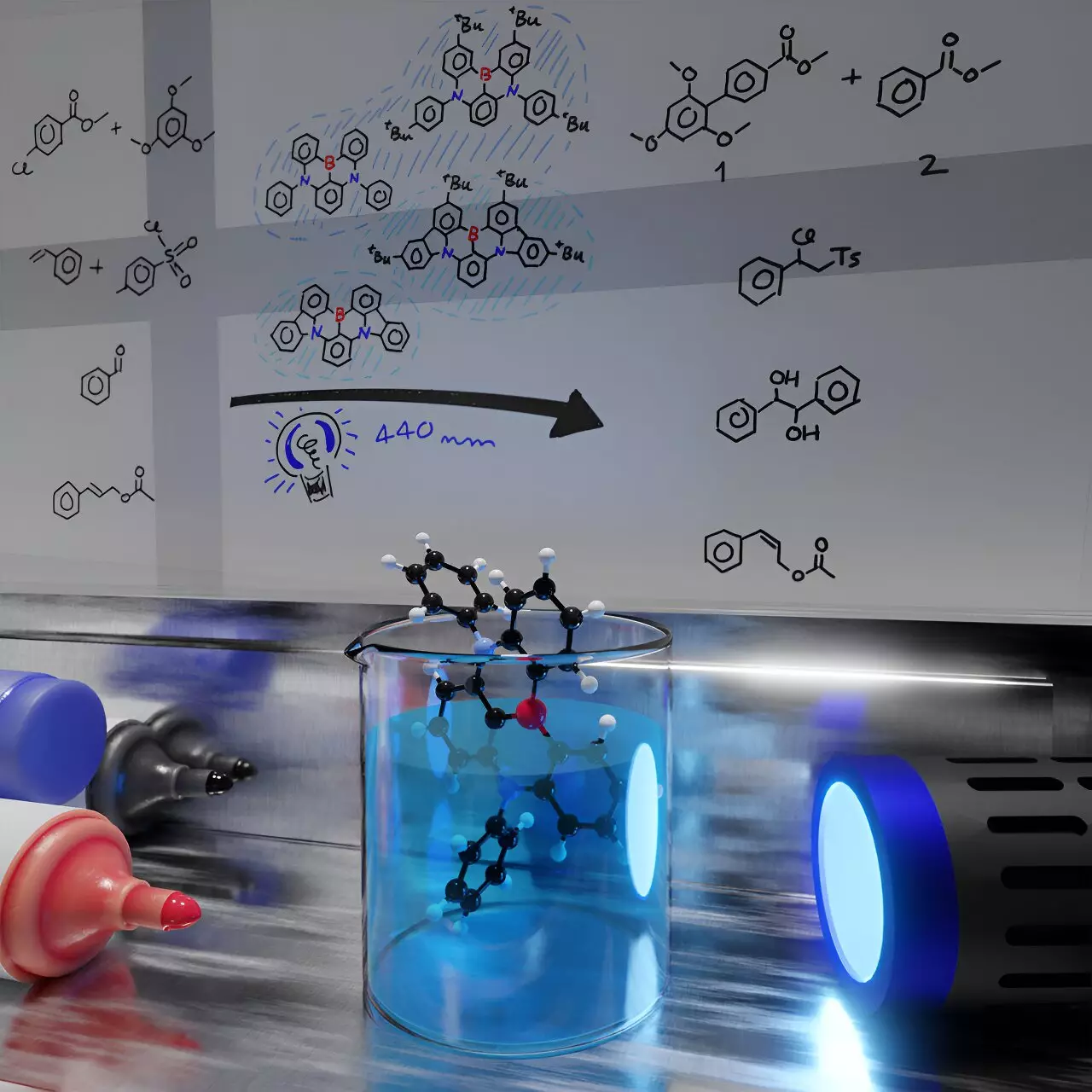In a recent report published on July 17, scientists from the University of St Andrews have highlighted the potential of organic compounds as replacements for expensive metal photocatalysts. These organic compounds, originally designed for use in organic light-emitting diodes, have shown promising results when utilized as photocatalysts in various chemical reactions.
Metal-based photocatalysts, such as those containing ruthenium and iridium, are not only costly but also scarce and toxic. This limits their application in industries like pharmaceuticals and agriculture, where the presence of trace metals is undesirable. Therefore, the search for sustainable and affordable alternatives to these metal photocatalysts is crucial for the advancement of various chemical processes.
Professor Eli Zysman-Colman and his team at the University of St Andrews have identified a family of four organic compounds, known as multi-resonant thermally activated delayed fluorescence (MR-TADF) compounds, as promising photocatalysts. These compounds exhibit strong absorption in the visible spectrum, insensitivity to solvent polarity, and electron-rich properties, making them suitable for a wide range of photocatalytic reactions.
Through a series of benchmark reactions, Zysman-Colman and his team found that the MR-TADF compounds performed as well as, if not better than, traditional metal photocatalysts. This includes reactions such as pinacol coupling, dehalogenations, and E/Z isomerizations, showcasing the versatility and efficiency of these organic materials in various chemical transformations.
The successful demonstration of the effectiveness of organic compounds as photocatalysts opens up new possibilities for industries such as pharmaceuticals and agriculture. By utilizing sustainable and eco-friendly alternatives to metal-based photocatalysts, these industries can streamline their processes and reduce the risk of metal contamination in their final products. Additionally, the research conducted by Zysman-Colman and his team contributes to the ongoing efforts to develop innovative solutions for the challenges associated with photocatalysis.
The use of organic compounds as photocatalysts represents a significant step towards sustainable and cost-effective chemical processes. As the demand for greener alternatives continues to grow, the development of organic materials with photocatalytic properties holds immense promise for a wide range of applications in various industries.


Leave a Reply